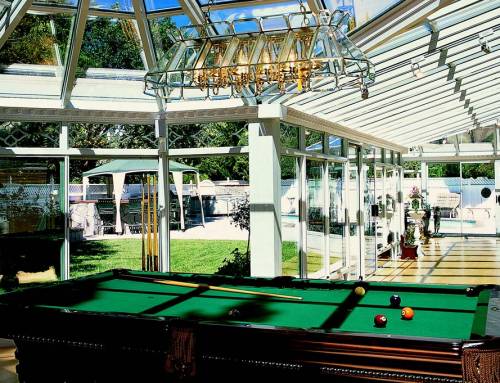History of Sunrooms
Sunrooms, solariums, and conservatories, began life as places for potting and preserving tender plants. Originally, they were outbuildings to country houses and stately homes and very much the domain of the gardener.
Over time, sunrooms were refined and became increasingly popular during the eighteenth century as glass became less of a luxury and as our increasingly intrepid ancestors returned from the far corners of the world with exotic botanical specimens to cultivate at home. In fact, some of the founders of the United States, including Thomas Jefferson and George Washington, had conservatories on their estates. Often, citrus trees were sheltered and nurtured here and the sunroom or conservatory became known as the “orangery”.
As so often happens, a purely functional space began to take on decorative aspects. People became aware that the sunroom could also be a garden room, a delightful spot in which to enjoy outdoor views and an al fresco atmosphere while remaining sheltered from the outside elements.
These early buildings were usually made with an iron framework and small glass panes. In the early nineteenth century, casting and building techniques greatly improved while mass production made glass even less expensive and more widely available. On the one hand, this made even grander conservatories and solariums possible, featuring more delicate and elaborate structures. On the other hand, it meant that much humbler homes could now aspire to a conservatory, and the domestic sunroom as we know it today began to take shape.
Public conservatories also sprang up, and many of the “winter gardens” that grace so many of Britain’s holiday resorts and spa towns are still standing today. The greatest of them all, however, is no longer with us. The magnificent Crystal Palace that was built in London’s Hyde Park to house the Great Exhibition of 1851 was destroyed by fire in 1936.
The Edwardian era saw a flowering of the conservatory before it went into a long hibernation. Wealthy people lost interest in the conservatory as a status symbol as it became more affordable to the middle class, while the middle class found that the conservatory did not provide the comfort and energy‑efficiency they began to demand in their homes.
It is no coincidence that the modern sunroom began its revival in North America during the energy crisis of the 1970s. At the same time, people saw sunrooms, solariums, and conservatories as a way to use passive solar energy to help heat their homes. In fact, this is when Four Seasons Sunrooms was born. Four Seasons Sunrooms, in partnership with the U.S. Department of Energy, helped create the Brookhaven House to study the effects of passive solar energy heating.
From its extensive research in the solar thermal properties of its products, Four Seasons Sunrooms helped advance the technology of glass from heating homes with solar energy to blocking solar energy to create glass rooms that could be economically heated and cooled just like an ordinary room addition. Four Seasons continually advances the technology of insulating glass and regularly updates its glass with the latest glazing available to ensure you have the best and most thermally efficient sunroom, conservatory, or solarium available.

